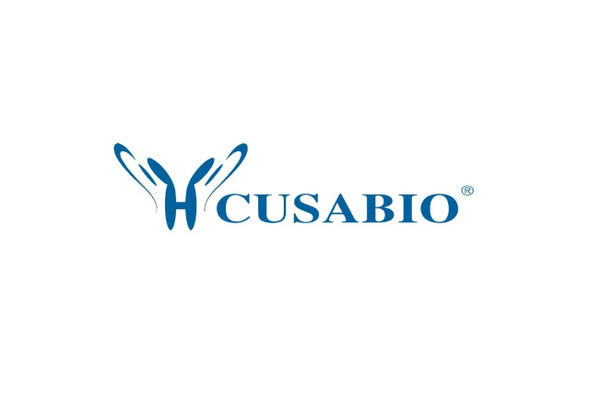Cusabio Human Recombinants
Recombinant Human Excitatory amino acid transporter 1 (SLC1A3), partial | CSB-EP021434HU
- SKU:
- CSB-EP021434HU
- Availability:
- 3 - 7 Working Days
Description
Recombinant Human Excitatory amino acid transporter 1 (SLC1A3), partial | CSB-EP021434HU | Cusabio
Alternative Name(s): Sodium-dependent glutamate/aspartate transporter 1;GLAST-1;Solute carrier family 1 member 3
Gene Names: SLC1A3
Research Areas: Neuroscience
Organism: Homo sapiens (Human)
AA Sequence: HPGKGTKENMHREGKIVRVTAADAFLDLIRNMFPPNLVEACFKQFKTNYEKRSFKVPIQANETLVGAVINNVSEAMETLTRITEELVPVPG
Source: E.coli
Tag Info: N-terminal 6xHis-KSI-tagged
Expression Region: 146-236aa
Sequence Info: Partial
MW: 25.5 kDa
Purity: Greater than 85% as determined by SDS-PAGE.
Relevance: Sodium-dependent, high-affinity amino acid transporter that mediates the uptake of L-glutamate and also L-aspartate and D-aspartate (PubMed:7521911, PubMed:8123008, PubMed:20477940, PubMed:26690923, PubMed:28032905, PubMed:28424515). Functions as a symporter that transports one amino acid molecule together with two or three Na+ ions and one proton, in parallel with the counter-transport of one K+ ion (PubMed:20477940). Mediates Cl- flux that is not coupled to amino acid transport; this avoids the accumulation of negative charges due to aspartate and Na+ symport (PubMed:20477940). Plays a redundant role in the rapid removal of released glutamate from the synaptic cleft, which is essential for terminating the postsynaptic action of glutamate (By similarity).
Reference: "Caveolin-1 Sensitivity of Excitatory Amino Acid Transporters EAAT1, EAAT2, EAAT3, and EAAT4." Abousaab A., Warsi J., Elvira B., Lang F. J. Membr. Biol. 249:239-249(2016)
Storage: The shelf life is related to many factors, storage state, buffer ingredients, storage temperature and the stability of the protein itself. Generally, the shelf life of liquid form is 6 months at -20?/-80?. The shelf life of lyophilized form is 12 months at -20?/-80?.
Notes: Repeated freezing and thawing is not recommended. Store working aliquots at 4? for up to one week.
Function:
Involvement in disease:
Subcellular Location:
Protein Families:
Tissue Specificity:
Paythway:
Form: Liquid or Lyophilized powder
Buffer: If the delivery form is liquid, the default storage buffer is Tris/PBS-based buffer, 5%-50% glycerol. If the delivery form is lyophilized powder, the buffer before lyophilization is Tris/PBS-based buffer, 6% Trehalose, pH 8.0.
Reconstitution: We recommend that this vial be briefly centrifuged prior to opening to bring the contents to the bottom. Please reconstitute protein in deionized sterile water to a concentration of 0.1-1.0 mg/mL.We recommend to add 5-50% of glycerol (final concentration) and aliquot for long-term storage at -20?/-80?. Our default final concentration of glycerol is 50%. Customers could use it as reference.
Uniprot ID: P43003
HGNC Database Link: N/A
UniGene Database Link: N/A
KEGG Database Link: N/A
STRING Database Link: N/A
OMIM Database Link: N/A










